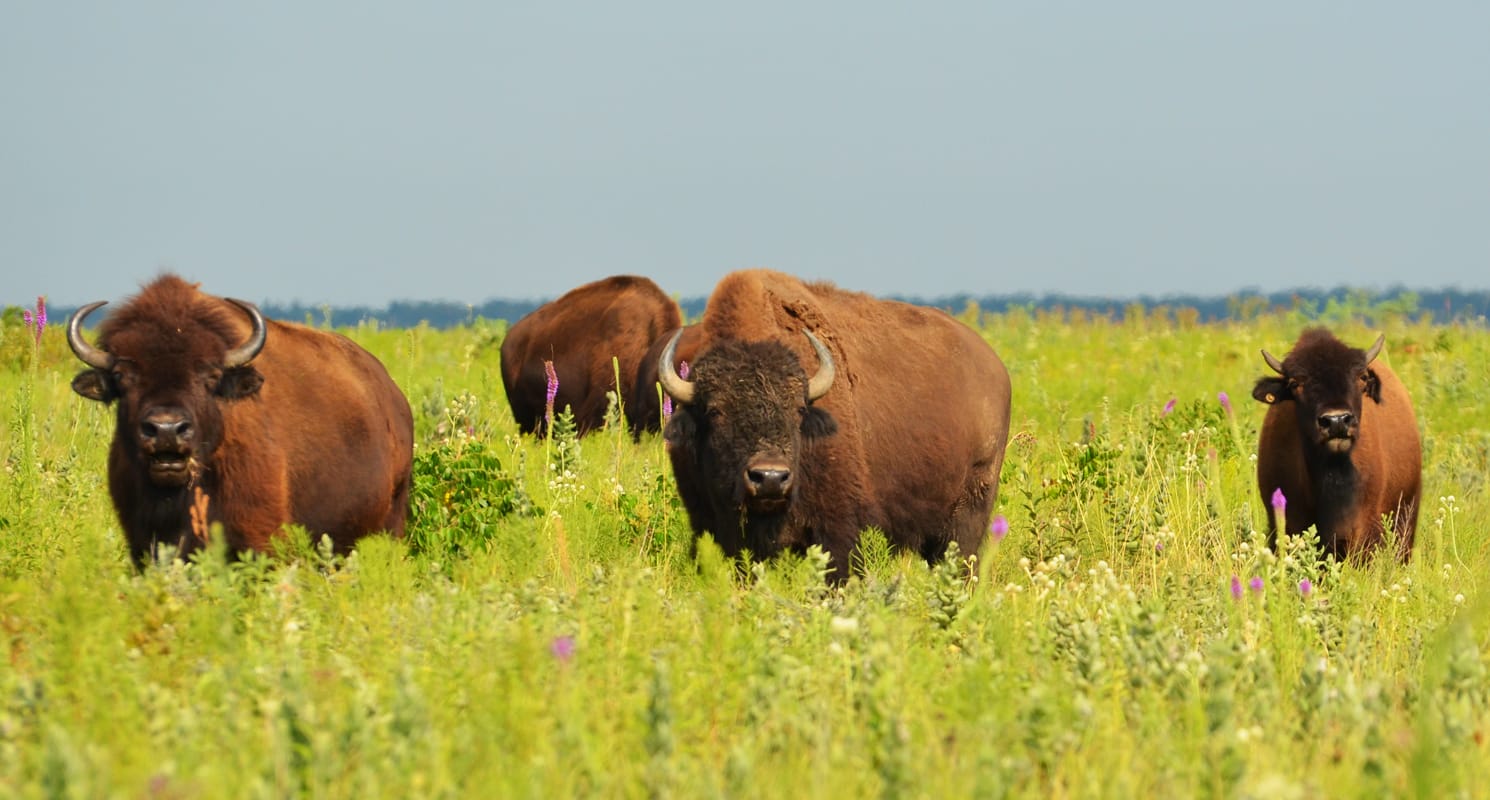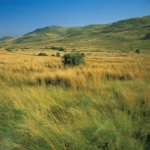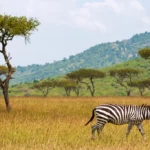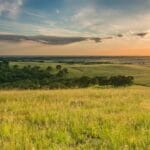Grasslands, those vast, grassy stretches often overlooked for their flashier counterparts like forests and oceans, are actually vital to our planet’s health. They’re home to a mind-boggling variety of creatures, from tiny critters to lumbering grazers, and they’re chock-full of hidden treasures. In this article, we’re going to uncover the secrets of grasslands and show you why we need to protect these unsung heroes of our ecosystems.
Why Are Grasslands Important?
Now, let’s delve into the world of grasslands and unveil their hidden wonders, starting with their extraordinary biodiversity!
Biodiversity Hubs Grasslands are bustling with life, from the mighty bison munching on grass to the elusive fox stealthily pouncing on its prey. These open spaces offer a haven for feathered friends, providing nesting grounds for a kaleidoscope of bird species. And don’t forget the humble insects! Grasslands are teeming with them, creating a vibrant community that supports the entire ecosystem.
Water Protectors Guess what? Grasslands act like giant sponges! They drink up rainfall and slowly release it into streams and rivers. This magical ability helps prevent floods, keeps rivers flowing during dry spells, and ensures a steady supply of fresh water for all creatures great and small.
Climate Guardians Grasslands are like secret carbon vaults! They store tons of carbon dioxide in their soil, keeping it safely locked away from the atmosphere. This helps slow down climate change, making grasslands essential allies in our fight against global warming.
Lifelines for Livelihoods For many across the globe, grasslands are not just scenic views but a lifeline. Livestock graze on these open pastures, providing food, clothing, and shelter for communities. Grasslands also offer a stage for recreation, tourism, and the gathering of traditional medicines.
Time to Step Up Unfortunately, these vital grasslands are facing challenges. Habitat loss, overgrazing, and climate change are threatening their existence. But fear not! We can protect and restore these ecosystems by recognizing their importance and taking collective action. Let’s join forces to preserve the health and beauty of grasslands, ensuring a thriving future for both nature and humanity!
Discover all about grasslands, their unique characteristics, and the diverse flora and fauna they support.
Explore why burrowing animals and ground-dwelling birds thrive in grassland ecosystems, uncovering their remarkable adaptations and survival strategies.
Learn how wildfires play a crucial role in maintaining the balance and biodiversity of savannas and grasslands, shaping these landscapes and supporting the species that call them home.
How do grasslands contribute to mitigating climate change and preserving biodiversity?
Grasslands, those vast open spaces carpeted in green, are not just empty fields. They’re like the planet’s superhero sidekicks, working tirelessly to protect our home and its inhabitants.
Carbon Capture Champions
Imagine grasslands as Earth’s mighty vacuum cleaners, sucking up carbon dioxide like a breeze. Their deep roots act like carbon storage vaults, locking it away underground, preventing it from wreaking havoc on our climate. Compared to forests, grasslands can pack away three times more carbon per square inch, making them a powerhouse in the fight against climate change.
Biodiversity Bonanza
Grasslands are like a biological carnival, teeming with life from the tiniest insects to majestic birds and grazing animals. Each species plays a crucial role in this ecosystem. Think pollinators buzzing from flower to flower, spreading plant love; seed dispersers carrying the seeds of tomorrow; and grazers keeping the grasslands tidy and healthy.
Waterkeepers Extraordinaire
Grasslands are nature’s water sponges. When it rains, they soak it up like a sponge, preventing floods and replenishing the groundwater. This hidden water treasure provides communities and wildlife with a steady flow of life-giving water.
Feeding and Sheltering the World
For livestock, grasslands are like giant salad bars, providing them with a nutritious buffet. And for wildlife, they’re like cozy homes, offering shelter and nesting sites for birds, insects, and all sorts of creatures great and small.
In a Nutshell:
- Grasslands are superheroes for mitigating climate change by capturing and storing carbon.
- They’re a biodiversity paradise, providing homes for countless species.
- They’re water reservoirs, preventing flooding and ensuring a constant water supply.
- They feed livestock and shelter wildlife, making them an essential part of our ecosystem.
Remember, grasslands are not just pretty landscapes; they’re invaluable guardians of our planet. Let’s cherish and protect them for generations to come.
What Ecosystem Services Do Grasslands Provide and Why Are They Crucial?
Picture stretches of grasslands dancing in the breeze, a tapestry of nature’s artistry. These lush meadows aren’t just wide-open spaces, they’re buzzing with life, providing us with essential benefits.
Ecosystem Services: Nature’s Gifts
Grasslands offer us a bundle of ecosystem services, like:
1. Pollination Partners: Grasslands are a haven for pollinators, tiny architects that keep our food chain humming. They dart between flowers, ensuring the survival of plants and the crops that feed us.
2. Pest Control Patrol: Grasslands field an army of pest control experts. Birds, bugs, and their ilk feast on pesky critters that threaten our crops, safeguarding our food supply.
3. Biodiversity Bastions: Grasslands burst with life, offering shelter to a kaleidoscope of animal, bird, and insect species. This diversity strengthens the ecosystem, making it more resilient to changes.
National Grasslands: Guardians of the Land
National grasslands take these services a step further, with even more benefits:
4. Erosion Brakes: Grasslands act as natural roadblocks against erosion, protecting our precious soils from the wrath of wind and water.
5. Flood Control Heroes: When rains unleash their fury, grasslands soak up the water like a sponge, preventing floods and ensuring a steady water supply.
6. Carbon Crusaders: Grasslands possess a secret weapon: they store carbon in their soil, acting as nature’s carbon vaults and helping mitigate climate change.
Key Points:
- Grasslands are hubs for pollination, pest control, and wildlife havens, supporting our food production and ecological harmony.
- National grasslands go the extra mile, providing erosion prevention, flood control, and carbon storage.
- Understanding the value of grassland ecosystem services is crucial for appreciating their impact on our well-being.
Grassland Ecosystem Services: A Table
| Service | Benefit |
|---|---|
| Pollination | Ensures food production by supporting plant growth |
| Pest control | Protects crops by reducing pest populations |
| Biodiversity | Enriches the ecosystem, fostering resilience |
| Erosion prevention | Protects soils from wind and water damage |
| Flood control | Absorbs and releases water, preventing floods |
| Carbon sequestration | Stores carbon, mitigating climate change |
How can we protect and manage grasslands to ensure their ecological integrity?
Imagine vast, rolling meadows, a tapestry of emerald green that stretches as far as the eye can see. This is the beauty of grasslands, one of our planet’s most important ecosystems. But these grasslands are facing challenges that threaten their health and the services they provide to us.
It’s time we take action to protect and manage grasslands, ensuring that they remain natural treasures for generations to come. Let’s explore some practical steps we can take together:
1. Let’s graze it right Overgrazing can be a problem for grasslands. When too many animals feed on the grass, it can strip the land bare, making it more vulnerable to erosion and harming the wildlife that depends on it. By adopting sustainable grazing practices, such as rotational grazing, we can minimize these impacts and keep grasslands healthy.
2. Restoring lost grasslands If grasslands have already been damaged, we can bring them back to life through restoration efforts. Planting trees, reseeding grasses, and controlling invasive species can all help restore lost habitats and re-establish a thriving grassland ecosystem.
3. Creating corridors for wildlife Grasslands are often fragmented due to human activities, which can isolate wildlife populations and hinder their movement. By creating wildlife corridors and establishing protected areas, we can ensure that animals have access to the resources they need and promote genetic diversity.
4. Farming with a heart for grasslands Agriculture is a necessary part of human life, but we can choose to farm in ways that support grasslands. Reducing the use of chemicals, implementing rotational grazing, and promoting agroforestry practices can all help protect these valuable ecosystems.
5. Tackling climate change’s impact Climate change is another major threat to grasslands. Rising temperatures and changes in precipitation patterns can affect plant growth and alter the delicate balance of grassland ecosystems. By taking steps to reduce greenhouse gas emissions and implementing adaptation measures, we can help mitigate these impacts and protect grasslands for the future.
Remember, grasslands are a vital part of our planet. They provide a home to countless species, store carbon, regulate water cycles, and support human livelihoods. By working together to implement these protection and management strategies, we can ensure that these verdant landscapes continue to thrive for generations to come.
FAQ
Q1: Why are grasslands important for biodiversity?
A1: Grasslands are vital for biodiversity as they provide diverse habitats for a wide range of plant and animal species. These ecosystems support numerous species of mammals, birds, insects, and reptiles, showcasing the ecological richness of grasslands.
Q2: How do grasslands contribute to climate regulation?
A2: Grasslands play a crucial role in climate regulation by sequestering carbon dioxide from the atmosphere through the process of photosynthesis. This carbon storage helps mitigate the impacts of climate change and maintain the Earth’s climate balance.
Q3: What are the economic benefits of grasslands?
A3: Grasslands provide a range of economic benefits, including supporting livestock grazing, which contributes to food production and livelihoods. They also offer recreational and tourism opportunities, which can boost local economies.
Q4: How do grasslands enhance water quality?
A4: Grasslands act as natural filters, absorbing pollutants and excess nutrients from the environment. This purification process helps improve water quality in both surface and groundwater sources, contributing to the health of aquatic ecosystems.
Q5: Why is it important to conserve grasslands?
A5: Conserving grasslands is essential for maintaining biodiversity, supporting livelihoods, regulating water cycles, and mitigating climate change. By protecting these ecosystems, we safeguard the vital services they provide for human well-being and the health of our planet.
- Mastering Leader in Spanish: The Complete Guide - April 19, 2025
- Uncovering Surprising Parallels: England Size Compared to US States - April 19, 2025
- Old Mexico Map: Border Shifts 1821-1857 - April 19, 2025
















